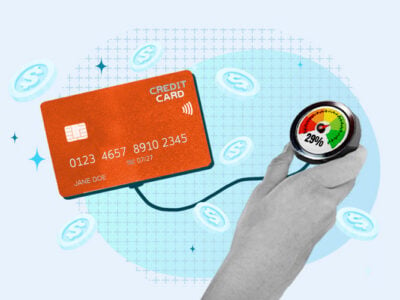With the release of the FICO 10 Suite, you now have 28 credit scores with FICO alone. 1 If you’re like most people, that’s bewildering: why do you need so many credit scores? What’s the point of releasing new credit-scoring models, and who’s using them, anyway?
The quick answer: FICO is in the business of selling your credit score to institutions like banks, lenders, and credit card issuers. Like Apple and Samsung with new phone models, FICO releases new credit-scoring models because they believe those institutions will want to buy the latest and greatest version of their credit scores.
And in the world of credit scoring, the “latest and greatest” means scores that predict, with ever-increasing accuracy, how risky it is to lend you money. But if FICO Score 10 and FICO Score 10T are the best, why do lenders still use FICO Score 8 more than any other version by far?
We’ll go over that, as well as what’s new in the FICO Score 10 Suite and how you can optimize your credit score.
Table of Contents
What are FICO Score 10 and FICO Score 10T?
FICO Score 10 and FICO Score 10T are new credit-scoring models that were released by FICO in 2020, which are part of what they call the FICO Score 10 Suite. According to FICO, compared to previous credit-scoring models, the new suite has several benefits for lenders:
- Stronger predictive performance among people with a short credit history, or thin credit files (commonly an issue with first-time homebuyers)
- Data alignment with previous FICO versions, making it easy to implement
- Optional trended data analysis (FICO Score 10T) to further enhance predictions
If you’re wondering what the last two bullets mean, you’re not alone. This hard-to-parse language essentially means that FICO’s models are easier for lenders to use.
This is a theme with FICO Score 10—most of the materials that FICO has released about it emphasize its benefits to creditors and other businesses, not to consumers. FICO’s grandest claim is that with FICO Score 10T, mortgage lenders can reduce delinquencies by 17%. 2
How are FICO credit scores calculated?
In general, your FICO credit score is calculated by analyzing positive and negative data in your credit reports. If you have negative items (like missed or late payments) in your report, you’ll get a score on the lower end of FICO’s credit score range. Most of FICO’s major versions range from 300 (the worst score) to 850 points.
All versions of FICO’s credit-scoring models create your score from the same weights and factors (outlined below).
FICO 10 Suite Credit Scoring Factors & Weights
| Payment History | Amounts Owed | Length of Credit History | Credit Mix | New Credit | |
|---|---|---|---|---|---|
| FICO | 35% | 30% | 15% | 10% | 10% |
While the factors and weights are the same across all FICO models, the way in which that data is interpreted differs between versions. How all of that works is, of course, FICO’s secret sauce, and they’re vague about the model’s inner workings.
Suffice to say that the FICO Score 10 Suite algorithm was developed based on more recent economic datasets. By evaluating newer data and incorporating it into this new suite, FICO claims it strengthens their predictions.
What’s the difference between FICO Score 10 and FICO Score 10T?
FICO 10T is the first FICO credit-scoring model to use trended data (as referenced by the “T” in 10T) to calculate your credit score. Trended data simply means the model analyzes historical data (aka “trended credit bureau data”) in your credit report to more accurately predict your financial behavior.
Most models just look at the most recently reported month’s balance and credit limit data, but 10T will analyze 24 months’ worth (or more). 3
With trended data factored into your score, if your reports show a historical trend of rising balances and increasing credit utilization, that may indicate to lenders that you’re becoming a riskier borrower.
In contrast to FICO 10T, FICO Score 10 does not use trended data.
What’s the difference between the FICO 10 Suite and previous FICO versions?
FICO Score 10 vs. FICO Score 9
FICO hasn’t released much information about what is internally different about FICO Score 10 compared to FICO Score 9.
In terms of results for lenders, FICO claims that by upgrading from FICO 9 to FICO 10, bankcard (credit card) issuers can reduce defaults in their portfolios by as much as 10%, and auto lenders can reduce them by 9%. 4 However, they’re vague about exactly what improvements lead to these results.
The FICO Suite 10 retains the consumer-friendly innovations that were new to FICO Score 9, including:
- Ignoring third-party collections that have been paid off
- Reducing the penalties on medical debt compared to non-medical debt
- Factoring in rental history reported in credit reports
FICO 9, despite being released in 2014 to lenders, still isn’t used by the vast majority of them.
FICO Score 10 vs. FICO Score 8
FICO Score 8 doesn’t have the consumer-friendly additions of FICO Score 9 or FICO Score 10. However, the fundamental way in which it analyzes credit reports is the same as the newer versions.
Despite being released in 2009 and being two versions old, FICO Score 8 remains the most-used credit scoring model by lenders.
FICO Score 10 vs. FICO Score XD
FICO Score XD is an alternative model that FICO developed to evaluate people who otherwise wouldn’t have credit scores at all. To do this, it incorporates data that normally isn’t factored into your credit score, such as utility and cell phone payments. FICO Score 10 doesn’t look at this data.
If your credit is established enough that you have a FICO 10 score (which also means you have a FICO 8 score, etc), your FICO XD score probably isn’t relevant to you—relatively few lenders use it.
Who uses the FICO Score 10 Suite?
As yet, most lenders (like banks, credit card issuers, and installment loan providers) don’t use the FICO Score 10 Suite.
If it’s better, why don’t lenders use FICO Score 10?
FICO provides lots of evidence that FICO Score 10 scores more people and predicts their behavior as well as (or more accurately than) all previous versions. 2
Nonetheless, financial institutions are naturally risk-averse. In their view, FICO’s studies may be exaggerated (it is, after all, their business to sell their model) or simply inaccurate.
Meanwhile, FICO Score 8 has been working well for lenders for more than a decade—so they have little incentive to try an untested model.
How can I improve my FICO 10 credit score?
There are no special tricks or hacks for improving your FICO 10 credit score. If you have a low FICO score, you need to do the following to fix your credit:
- Pay your bills on time
- Pay off any debts you owe
- Don’t overuse your credit cards
Improving your credit is relatively simple, but it takes discipline. All you really have to do is maintain responsible borrowing habits for a period of several years.







